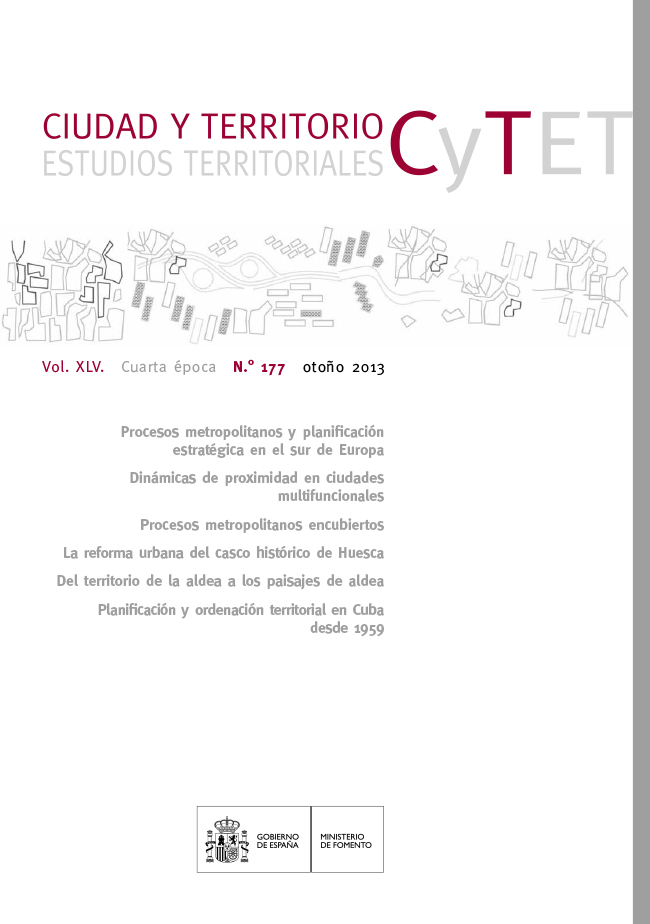From the Territory of the Village to the Village Landscape in the Nansa Valleys (Cantabria)
Keywords:
Village, territory, heritage, landscape, Nansa Valleys (Cantabria)Abstract
The methodological and conceptual foundations that guide the development of this
paper are grounded on two considerations about the definitions of the territory and the village
as facts or superimposed layers that shape up these valleys. 1) The current territory is the
result of the evolution of the geological foundation by transformations accumulated over time
throughout history due to natural processes and human interventions. The territorial heritage
includes this temporal and spatial overlap of historical heritages. 2) The medieval village can
be defined as a community of neighbors equipped with a specific socio-political personality
who live and exploit a specific area delimited as a term itself. In this space, the village builds
and develops all its activities as an organizational model that must be repeated through the
valleys and mountains and finds legal expression in local ordinances. The village is the cell
that makes up the structure of the territory. A third consideration relates to the landscape,
understood as the image —and interpretation— of the territory. The village landscapes have
been constructed and inserted into the large units defined by geomorphologic base reliefs. The
valley landscape is from this perspective, the sum of the village landscape.
Downloads
Downloads
Published
How to Cite
Issue
Section
License
Copyright (c) 2013 Eduardo Ruiz de la Riva, Eduardo Cabanas Moreno, Pedro Fernández Lastra

This work is licensed under a Creative Commons Attribution-NonCommercial-NoDerivatives 4.0 International License.
Considering the provisions of the current legislation on Intellectual Property, and in accordance with them, all authors publishing in CyTET give -in a non-exclusive way and without time limit- to the Ministry of Transport, Mobility and Urban Agenda the rights to disseminate, reproduce, communicate and distribute in any current or future format, on paper or electronic, the original or derived version of their work under a Creative Commons Attribution-NonCommercial-NoDerivative 4.0 license International (CC BY-NC-ND 4.0), as well as to include or assign to third parties the inclusion of its content in national and international indexes, repositories and databases, with reference and recognition in any case of its authorship.
In addition, when sending the work, the author(s) declares that it is an original work in which the sources that have been used are recognized, committing to respect the scientific evidence, to no longer modify the original data and to verify or refute its hypothesis. Author(s) also declare that the essential content of the work has not been previously published nor will it be published in any other publication while it is under evaluation by CyTET; and that it has not been simultaneously sent to another journal.
Authors must sign a Transfer of Rights Form, which will be sent to them from the CyTET Secretariat once the article is accepted for publication.
With the aim of promoting the dissemination of knowledge, CyTET joins the Open Journal Access (OA) movement and delivers all of its content to various national and international indexes, repositories and databases under this protocol; therefore, the submission of a work to be published in the journal presupposes the explicit acceptance by the author of this distribution method.
Authors are encouraged to reproduce and host their work published in CyTET in institutional repositories, web pages, etc. with the intention of contributing to the improvement of the transfer of knowledge and the citation of said works.








 Enlace a CyTET en Linkedin
Enlace a CyTET en Linkedin